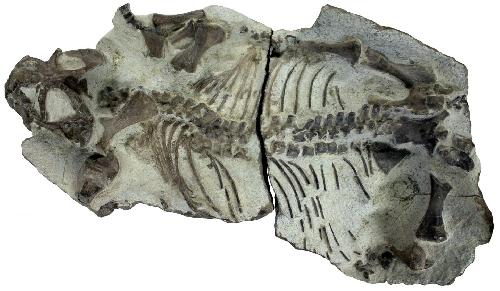Two hundred and fifty-two million years ago, a series of Siberian volcanoes erupted and sent the Earth into the greatest mass extinction of all time. Billions of tons of carbon were propelled into the atmosphere, radically altering the Earth's climate. Yet, some animals thrived in the aftermath and scientists now know why. In a new study published in Scientific Reports, paleontologists from The Field Museum and their collaborators demonstrate that some ancient mammal relatives, known as therapsids, were suited to the drastic climate change by having shorter life expectancies. When combined with results from survivorship models, this observation leads the team to suggest that these animals bred at younger ages than their predecessors.
"Before the Permo-Triassic extinction, the therapsid Lystrosaurus had a life span of about 13 or 14 years based on the record of growth preserved in their bones," said Field Museum paleontologist Ken Angielczyk, one of the paper's authors. "Yet, nearly all of the Lystrosaurus specimens we find from after the extinction are only 2¬-3 years old. This implies that they must have been breeding when they were still juveniles themselves."
This adjustment in life history also meant a physical change for Lystrosaurus. Before the mass extinction, this creature would have been a couple meters long and have weighed hundreds of pounds--About the size of a pygmy hippo. Post-extinction, its size dropped to that of a large dog, in large part due to its altered lifespan. Yet, these adaptations seemed to pay off for Lystrosaurus. Ecological simulations show that by breeding younger, Lystrosaurus could have increased its chance of survival by 40% in the unpredictable environments that existed in the aftermath of the extinction.

This change in breeding behavior is not isolated to ancient animals either. In the past century, the Atlantic cod has undergone a similar effect due to human interference. Industrial fishing has removed most large individuals from the population, shifting the average size of cod significantly downward. Likewise, the remaining individuals are forced to breed as early in their lives as possible. Similar shifts have also been demonstrated in African monitor lizards.
"With the world currently facing its sixth mass extinction, paleontological research helps us understand the world around us today," said Angielczyk. "By studying how animals like Lystrosaurus adapted in the face of disaster, we can better predict how looming environmental changes may affect modern species."




Comments